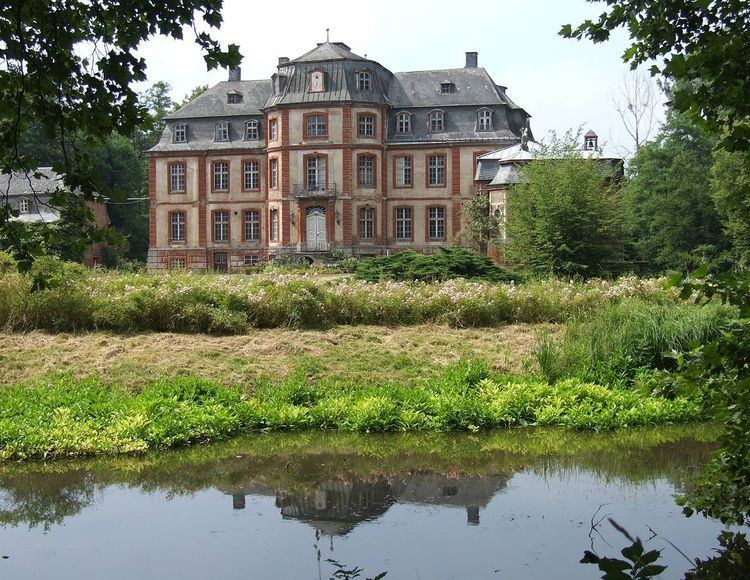Name Francois Cuvillies Structures Amalienburg | Role Designer | |
 | ||
Died April 14, 1768, Munich, Germany Children Francois de Cuvillies the Younger | ||
Francois de Cuvillies (23 October 1695, Soignies, Hainaut — 14 April 1768, Munich) was a Belgian-born Bavarian decorative designer and architect who was instrumental in bringing the Rococo style to the Wittelsbach court at Munich and to Central Europe in general.
Contents
Biography
Cuvillies was so diminutive in stature that it was as a court dwarf he first came to the notice of the currently exiled Max Emanuel, Elector of Bavaria, who detected the young dwarf's aptitude and had him tutored in mathematics, then underwrote his further education with Joseph Effner and sent him to Paris, 1720–24, where he trained in the atelier of Jean-Francois Blondel, On his return to Munich he was appointed court architect, at first in conjunction with Effner.
At the Elector's death in 1726, for a time Cuvillies worked at Schloss Bruhl for the new Elector's brother, Clemens August of Bavaria. He provided designs for the chapel at Bruhl, (1730–40) and the hunting lodge Falkenlust (1729–40) but as Charles Albert's interests shifted to Munich, he also returned to Munich. There his fame was established by the decors of the Reiche Zimmer in the Munich Residenz, which had been damaged by a fire, 14 December 1729. The contents of the Schatzkammer fortunately had been spared, and Cuvillies was commissioned to design the panelling of a new interior, to be executed by the court's premier carver Joachim Dietrich. with four rococo gilded console tables on scrolling legs with playful dragons.
His masterpiece is the Amalienburg in the park at Nymphenburg, built 1734-39, with silvered or gilded naturalist Rococo decorations set off by coloured grounds. As the 1911 Encyclopaedia Britannica commented, "his style, while essentially thin, is often painfully elaborate and bizarre. He designed mirrors and consoles, balustrades for staircases, ceilings and fireplaces, and in furniture, beds and commodes especially".
The Residenztheater, or "Cuvillies Theatre" (1751–1755) designed and constructed for Elector Max III Joseph by Cuvilliees; though the theatre was bombed during World War II, the carved and gilded boxes had been dismantled and stored for security. Afterwards the Residenztheatre was meticulously recreated in the 1950s.
He wrote several treatises on artistic and decorative subjects, which were edited by his son, Francois de Cuvillies the Younger, who succeeded his father at the court of Munich. From 1738 he embarked on his lifelong series of suites of engravings of wall-panelling, cornices, furniture and wrought-iron work, which were then published in Munich and distributed in Paris and doubtless elsewhere; they served to disseminate the Rococo throughout Europe.
